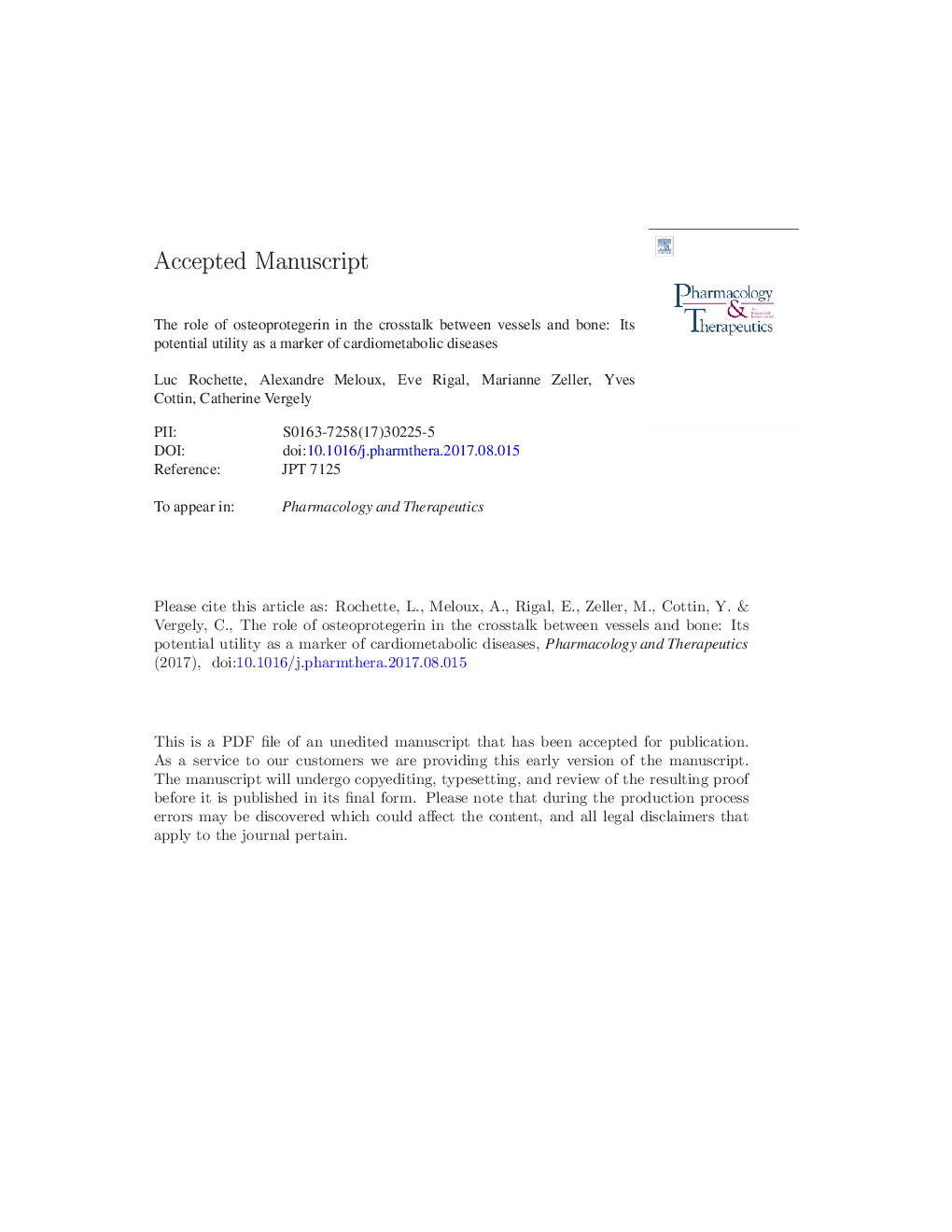| Article ID | Journal | Published Year | Pages | File Type |
|---|---|---|---|---|
| 8536943 | Pharmacology & Therapeutics | 2018 | 49 Pages |
Abstract
Among the numerous molecules that are being studied for their potential utility as biomarkers of cardiovascular diseases, much interest has been shown in the superfamily of tumor necrosis factor (TNF) receptors. Members of this family include osteoprotegerin (OPG) and its ligands, which are receptor activators of nuclear factor κB ligand (RANKL) and TNF-related apoptosis-inducing ligand (TRAIL). These signals may be expressed and regulated, and their functions could be involved in several physiological and pathological processes. The relationship between bone regulatory proteins and vascular biology has attracted attention, and it has been suggested that OPG may mediate vascular calcification and cardiometabolic diseases. OPG is steadily released from vascular endothelial cells in response to inflammatory stimuli, suggesting that it plays a modulatory role in vascular injury, inflammation, and atherosclerosis. Vascular calcification, a hallmark of atherosclerosis, is similar to bone remodeling. It is an actively regulated mechanism that includes both inductive and inhibitory processes. There is a temporal link between the development of osteoporosis and vascular calcification, which is particularly marked in post-menopausal women and the elderly. The precise nature of the link between bone metabolism, vascular calcification and cardiovascular disease is largely unknown but increasing evidence suggests that the triad of RANK/RANKL/OPG may be important in the initiation of various diseases. An increased release of OPG is associated with increased cardiovascular risk and it is suggested that increased OPG levels resulting from vascular damage correspond to a protective mechanism. Circulating OPG levels could be used as independent biomarkers of cardiovascular disease in patients with acute or chronic cardiometabolic disease and thus an improved prognosis.
Keywords
GDF-15EVSFGF-23ADMAECFCGAGGLACRDCysEPCECDALPAlkaline phosphataseamino acidgamma-carboxyglutamic acidcoronary artery diseasecardiovascular diseasechronic kidney diseaseExtracellular vesiclesextracellular domaincysteine rich domainasymmetric dimethylarginineCVDEndothelial colony-forming cellEndothelial cellEndothelial progenitor cellCysteinebody mass indexBMICADgrowth differentiation factor-15Fibroblast growth factor-23Atrial fibrillationBMPCKDBone morphogenetic proteinGlycosaminoglycanEstrogen receptorDeath receptors
Related Topics
Health Sciences
Pharmacology, Toxicology and Pharmaceutical Science
Pharmacology
Authors
Luc Rochette, Alexandre Meloux, Eve Rigal, Marianne Zeller, Yves Cottin, Catherine Vergely,
